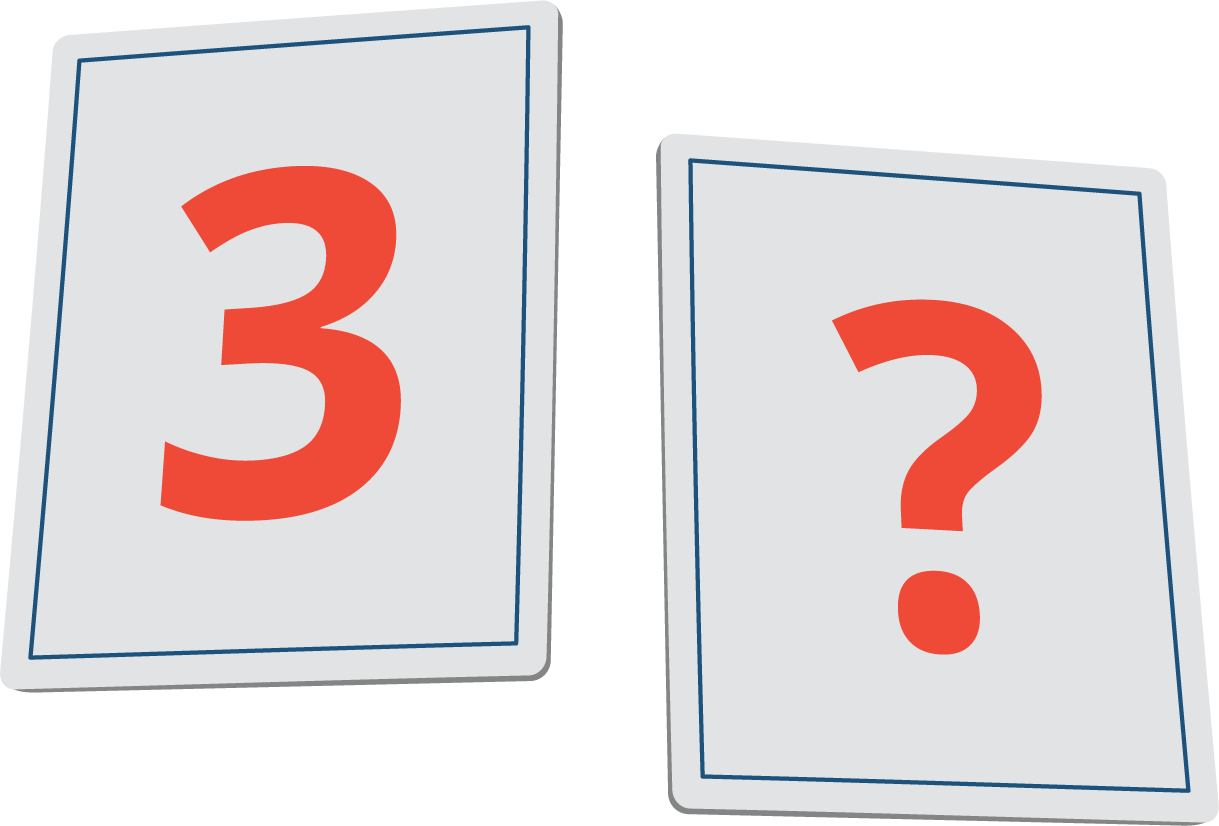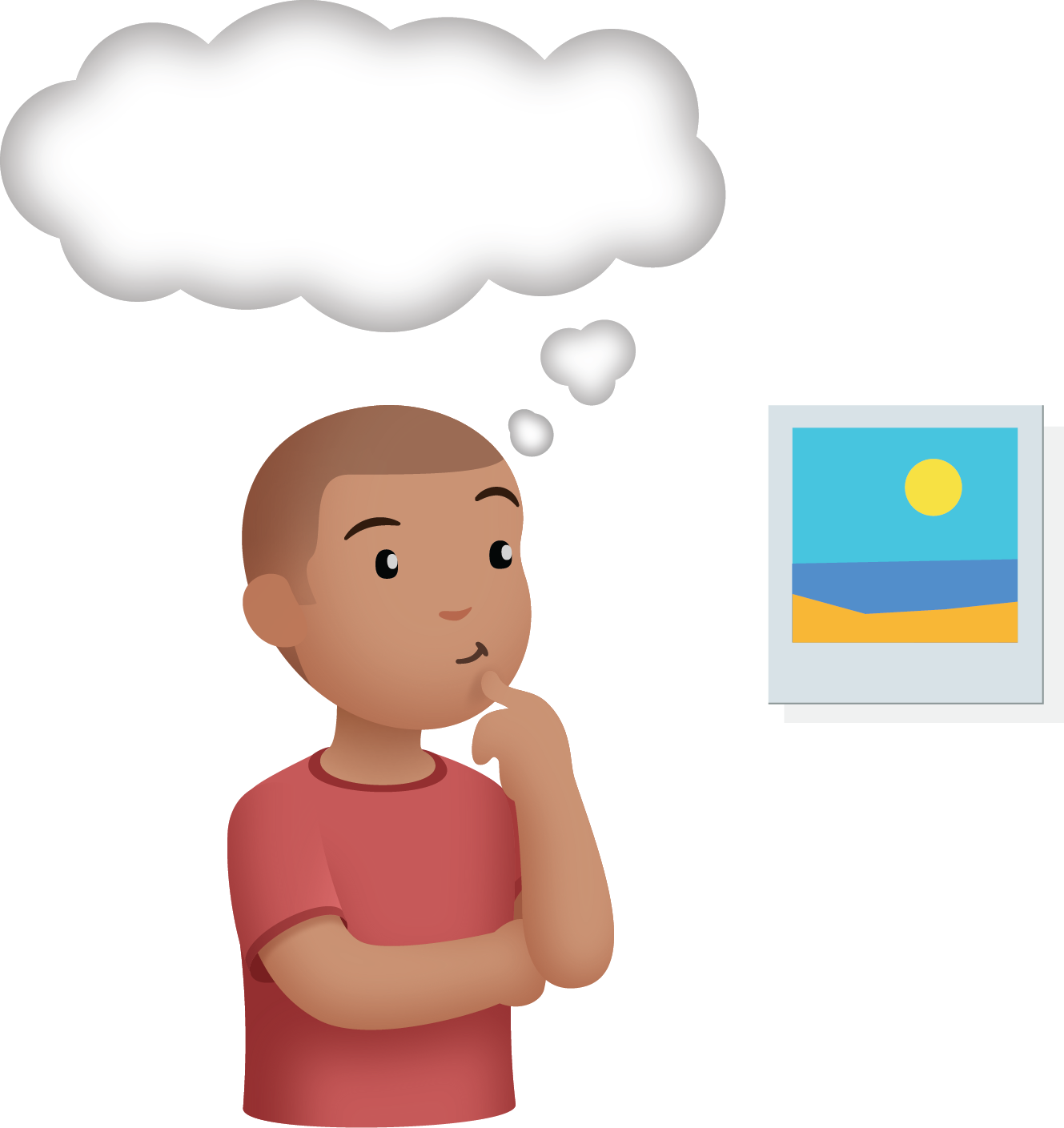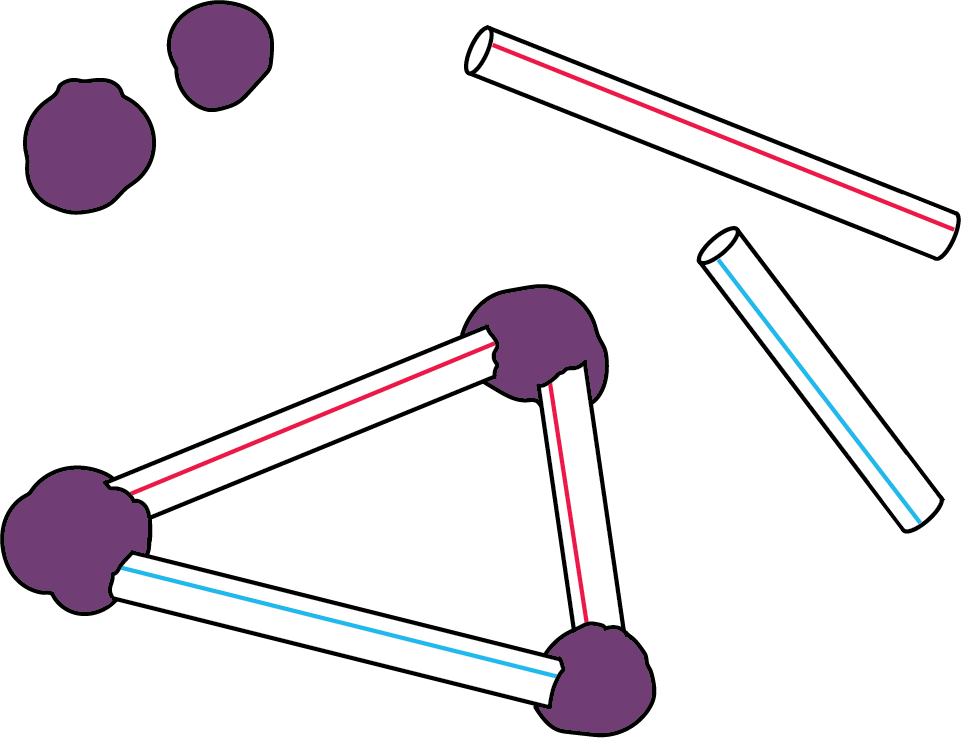Lesson 6
Create Number Books (Part 1)
Warm-up: Notice and Wonder: All Hands On (10 minutes)
Narrative
The purpose of this warm-up is to elicit the idea that there are lots of things to count around us and different ways to count them, which will be useful when students find objects in the school to include in a number book in a later activity. While students may notice and wonder many things about these hands, the number of hands and fingers are the important discussion points.
Launch
- Groups of 2
- Display the image.
- “What do you notice? What do you wonder?”
- 1 minute: quiet think time
Activity
- “Discuss your thinking with your partner.”
- 1 minute: partner discussion
- Share and record responses.
Student Facing
What do you notice?
What do you wonder?

Student Response
For access, consult one of our IM Certified Partners.
Activity Synthesis
- “What did you see in the picture that you can count?” (How many hands there are, how many fingers there are, how many people.)
- “How can you figure out how many people there are?” (Each person has 2 hands. There are 3 people.)
Activity 1: Explore Number Books (10 minutes)
Narrative
The purpose of this activity is for students to identify common features of books about numbers, such as having numbers and drawings on each page.
Some examples of number and math books include “One Is a Snail, Ten Is a Crab: A Counting by Feet Book” by April Pulley Sayre and Jeff Sayre, “Fish Eyes” by Lois Ehlert, and “One Duck Stuck” by Phyllis Root. If time allows, read some of the number books to the class.
Required Preparation
- Gather a variety of number books for the class to look through.
Launch
- Groups of 2
- Give students access to a variety of number books.
- “Look through these books with your partner. Tell your partner what you notice and wonder on each page.”
Activity
- 5 minutes: partner work time
- “As you look through the books, think about what is the same and what is different about each book.” (This book is about animals and that book is about children. The books all have numbers on the pages.)
- 3 minutes: partner work time
- Share responses.
Student Response
For access, consult one of our IM Certified Partners.
Activity Synthesis
- Display a page that includes a number, a picture, and some words or a sentence.
- “What do you see on this page?”
- Share responses.
- “We are going to make number books about our school. Just like these number books, each page will include a number, a drawing, and some words.”
Activity 2: School Walk (15 minutes)
Narrative
The purpose of this activity is for students to identify important objects or features in their school community and connect them to numbers. When students identify objects around them that they can count they make a first step toward quantifying their world (MP4).
Advances: Speaking, Conversing
Supports accessibility for: Memory, Organization
Required Materials
Materials to Gather
Launch
- Give each student a clipboard with a blank piece of paper.
- “We’re going to take a walk around the school. As we’re walking, look for things that you would like to include in your number book. Use your recording sheet so that you remember your ideas. If I wanted to write about how many tables are in our class, what could I put on my recording sheet so I remember?” (You could draw a table. You could write the number 6 because there are 6 tables. You write the word table.)
- Demonstrate recording based on students’ suggestions.
Activity
- 10 minutes: whole-class school walk
Student Response
For access, consult one of our IM Certified Partners.
Activity Synthesis
- “What are you most excited to include in your number book about our school?”
- Share and record responses.
- “Did anyone find something that they want to include in their number book that there are 3 of? What about 10?”
Activity 3: Centers: Choice Time (20 minutes)
Narrative
The purpose of this activity is for students to choose from activities that offer practice with number and shape concepts. Students choose from 5 centers introduced in previous units. Students can choose to work at any stage of the centers.
- Picture Books
- Find the Pair
- Math Stories
- Build Shapes
- Make or Break Apart Numbers
Required Materials
Materials to Gather
Required Preparation
- Gather materials from:
- Picture Books
- Find the Pair
- Math Stories
- Build Shapes
- Make or Break Apart Numbers
Launch
- Groups of 2
- “Today we are going to choose from centers we have already learned.”
- Display the center choices in the student book.
- “Think about what you would like to do first.”
- 30 seconds: quiet think time
Activity
- Invite students to work at the center of their choice.
- 8 minutes: center work time
- “Choose what you would like to do next.”
- 8 minutes: center work time
Student Facing
Choose a center.
Find the Pair

Math Stories

Build Shapes

Make or Break Apart Numbers

Picture Books

Activity Synthesis
- “If you were going to teach another student how to play ________ center, what would you tell them or show them?”
Lesson Synthesis
Lesson Synthesis
Cool-down: Unit 8, Section B Checkpoint (0 minutes)
Cool-Down
For access, consult one of our IM Certified Partners.